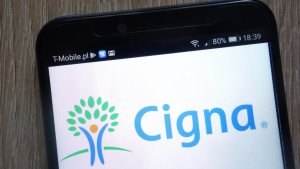According to S&P Dow Jones Indices, there were $236.8 billion in stock buybacks for S&P 500 companies in 2024’s first quarter, up 8.1% from Q4 2023, and 9.9% from Q1 2023.
Of the hundreds of companies in the index, 352 reported at least $5 million in share repurchases during the first quarter, down from 358 in Q1 2023. The top 20 S&P 500 companies accounting for 50.9% of Q1 2024 buybacks. Overall, the average share repurchase expenditure in the quarter increased by 8% year-over-year.
My intuition tells me I will find my top three 2024 stock buybacks from these 20 companies. Call it a hunch.
Wells Fargo (WFC)

Wells Fargo (NYSE:WFC) repurchased $6.1 billion of its stock in the first quarter, 1.49x its buybacks in Q1 2023. Its return on its investment so far is 9.8%, based on the bank paying an average price per share of $53.80.
In the final month of the first quarter in March, the bank repurchased 49.76 million of its shares at an average price of $56.80. The bank’s remaining share repurchase authorization at the end of the first quarter was $20.72 billion. If it keeps up the pace of the first quarter, it will take another 3 to 4 quarters to complete the current buyback plan.
Over the past 12 months through March, it bought back $13.84 billion of its stock, 3.4x the amount in the previous 12 months. It’s a big sign the bank has recovered from the issues plaguing it for the past few years.
WFC stock is a buy.
Cigna Group (CI)

Cigna Group (NYSE:CI) repurchased $4.02 billion of its stock in the first quarter, 4.2x more than its buybacks in Q1 2023. Its return on its investment so far is -3.3% based on an average price per share of $336.63. However, as part of an accelerated share repurchase plan (ASR), it has $640 million in share repurchases to close in the second quarter as part of the $4.02 billion, providing a better average price.
Over the past 12 months through March, it bought back $5.34 billion of its stock, 26% less than the amount in the previous 12 months. Over the past 10 years, it’s bought back $32.56 billion of its stock, about 0.5% of the $6.91 trillion repurchased by S&P 500 companies over the same time period. In Q1 2024, it was 1.7%, or about three times its 10-year percentage.
Over the next five years, Cigna expects to generate approximately $60 billion in cash flow. It will use 60-65% of that for strategic M&A, debt repayment and share repurchases. Dividends will account for 15% of cash flow and capital expenditures the remaining 20-25%.
As of May 1, it had $7.3 billion remaining on its share repurchase authorization.
UnitedHealth Group (UNH)

UnitedHealth Group (NYSE:UNH) repurchased $3.07 billion of its stock in the first quarter, 54% more than its buybacks in Q1 2023. Its return on its investment so far is -3.7% based on an average price per share of $505.46.
As I recently wrote about the country’s largest health insurer, 2024 hasn’t been easy, as the company’s Change Healthcare subsidiary suffered a cyberattack in February that cost UNH close to a billion dollars in the first quarter alone. Its shares dropped considerably on the news.
However, long term, it’s an excellent business to own, so the share repurchases will ultimately generate a significant return on investment.
Over the past 12 months through March, it bought back $9.07 billion of its stock, 1.4x the amount in the previous 12 months. Over the past 10 years, it’s bought back $44.4 billion of its stock, about 0.7% of the $6.91 trillion repurchased by S&P 500 companies over the past decade. In Q1 2024, it was 2.5%, or about three times its 10-year percentage.
On the date of publication, Will Ashworth did not have (either directly or indirectly) any positions in the securities mentioned in this article. The opinions expressed in this article are those of the writer, subject to the InvestorPlace.com Publishing Guidelines.
On the date of publication, the responsible editor did not have (either directly or indirectly) any positions in the securities mentioned in this article.
Will Ashworth has written about investments full-time since 2008. Publications where he’s appeared include InvestorPlace, The Motley Fool Canada, Investopedia, Kiplinger, and several others in both the U.S. and Canada. He particularly enjoys creating model portfolios that stand the test of time. He lives in Halifax, Nova Scotia.
